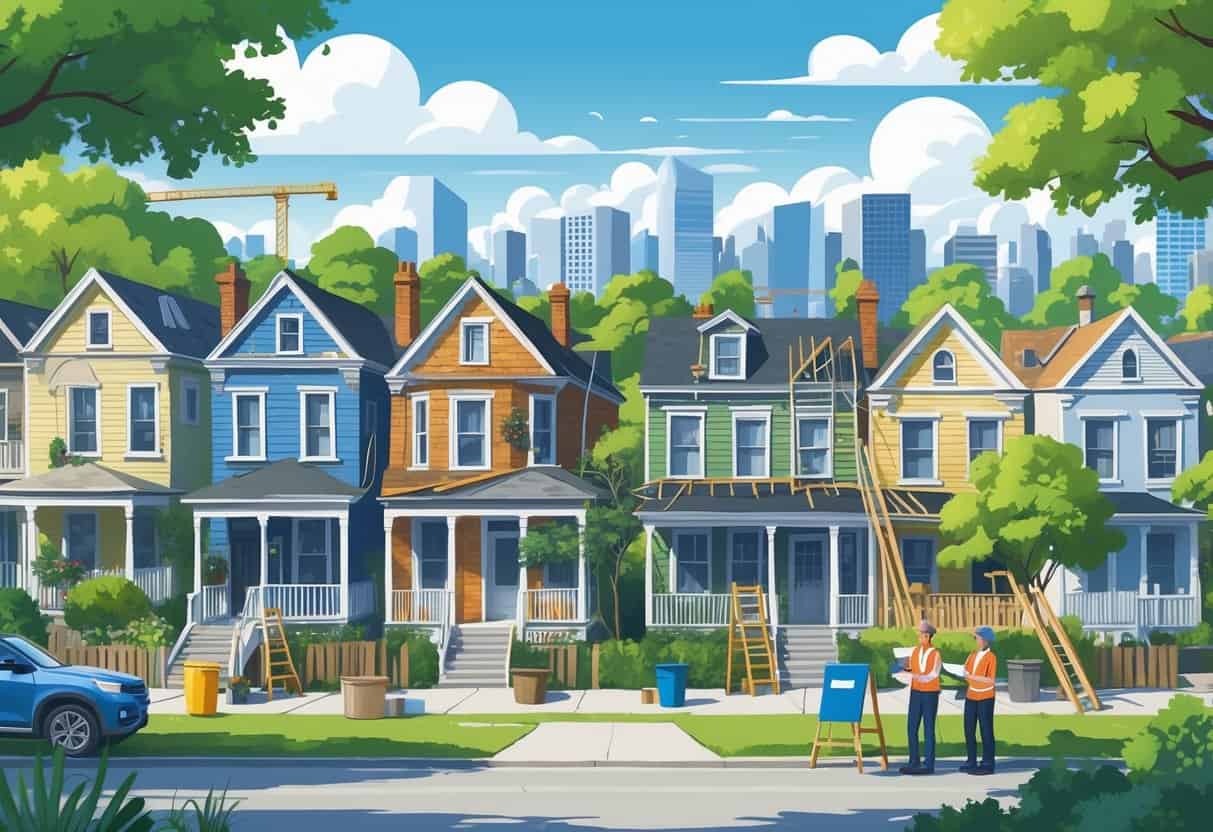Thinking about buying a fixer-upper? The city you pick can really shape your investment outcome.
Some places just make more sense—homes are cheaper, there’s room to add value, and the resale market is stronger. Cities like Miami, Los Angeles, and New Haven have a reputation for fixer-uppers that, with some elbow grease, can turn a solid profit.

But it’s not just about snagging a low price. You’ve got to think about the local market, renovation costs, and whether buyers will actually want your finished project down the road.
Location can spare you a lot of headaches and give your investment a better shot at growing.
Some cities even offer financial perks or special programs to help with repairs. If you can find those, it’s a big plus.
Here’s a rundown of the best cities and what to keep in mind when you’re hunting for a fixer-upper.
Key Takeways
- Your city choice can make or break your profit (and your sanity).
- Always check local market trends and renovation costs before diving in.
- Some places offer financial incentives for buyers willing to take on a project.
Top Cities for Buying a Fixer-Upper
There are cities where you’ll find lower home prices, more upside, or just a market that’s hungry for improvement.
Knowing where to look can help you find a property that fits your budget and your goals.
Best Value Markets for Fixer-Uppers
Try to find cities with low home prices that are still close to decent job markets.
Gary, Indiana, and Pine Bluff, Arkansas, come to mind. These spots have tons of fixer-uppers at prices that almost seem too good to be true.
You can get a big discount compared to move-in-ready homes, and still work with established neighborhoods.
These places usually see slower price growth, so you get breathing room to renovate—no need to rush before prices skyrocket.
Popular Cities with High ROI Potential
Big cities like Los Angeles, Dallas, and Chicago? They’re buzzing with demand for renovated homes.
You might pay more upfront, but the payoff can be huge after a smart renovation.
California especially is known for strong returns on fix-and-flip projects. It pays to look for neighborhoods where prices are on the rise but houses still need work.
Emerging Urban Areas for Renovation
Some smaller or mid-sized cities are picking up steam and could be the next hot market.
New Haven, Connecticut, and Syracuse, New York, have a good supply of fixer-uppers and potential for growth.
If you get in early, you might catch a wave of revitalization before prices jump. Watch for cities with new development plans or improving services.
These places often balance affordability with a real shot at future gains.
Factors to Consider When Choosing a City
Choosing the right city isn’t just about what’s cheap. You have to look at local market trends, living costs, and the rules for fixing up homes.
All of these affect your budget, your timeline, and how smooth (or bumpy) your project will be.
Real Estate Market Trends
Check how many fixer-uppers are on the market and how fast they sell.
New Orleans and Chicago, for example, have a decent selection, so you’re not stuck with just one or two options.
Look for places where fixer-uppers are a solid 29% to 50% cheaper than move-in-ready homes.
Also, peek at recent sales of similar properties to get a feel for resale value. If homes sit on the market longer, you might have more wiggle room to negotiate.
Cost of Living and Affordability
The cost of living can sneak up on you. Sure, the house might be cheap, but what about utilities, taxes, and supplies?
Pick cities where the overall expenses line up with your budget and renovation plans.
Don’t forget property taxes and insurance—they can swing a budget fast. Affordable cities let you spread out renovation costs over time without too much stress.
Local Permitting and Renovation Regulations
Every city has its own maze of permits and building codes.
Some places pile on the paperwork or demand strict inspections, which slows things down and adds costs.
Others keep it simple, saving you time and hassle. Always check if you’ll need historic certificates or if certain renovations are off-limits.
Knowing this up front can spare you some nasty surprises.
Financing and Incentives for Fixer-Upper Buyers
Buying a fixer-upper means planning for both the purchase and the repairs. There are loans that bundle everything together, and some cities or states offer grants or tax breaks if you qualify.
It’s worth digging into your options before you sign anything.
Loan Options for Renovation Projects
Renovation loans can cover both buying the home and fixing it up—all in one shot.
Popular picks include:
-
FHA 203(k) Loan: Government-backed, lets you borrow based on what the house will be worth after repairs. Works for small fixes or big overhauls.
-
Fannie Mae HomeStyle Loan: Covers renovation costs with more flexibility on what you can fix. Great if you’ve got good credit and want to add some nice upgrades.
These loans usually ask for detailed plans and cost estimates. They can ease your cash flow, but expect more paperwork.
Shop around for rates and terms before you commit.
Tax Credits and Grants
Some cities and states hand out tax credits or grants to nudge people toward home improvements, especially in older neighborhoods. These programs might cut your tax bill or even put some cash in your pocket.
-
Historic Home Tax Credits: Got a fixer-upper in a historic district? You could be eligible for credits if you restore it.
-
Local Grants: Certain places offer grants for things like energy-efficient upgrades or crucial repairs—think roofing or plumbing.
You’ll want to check with local housing agencies or poke around your city’s website. These incentives usually come with income limits or deadlines for finishing the work. Honestly, applying early is smart if you want a shot at getting support.
